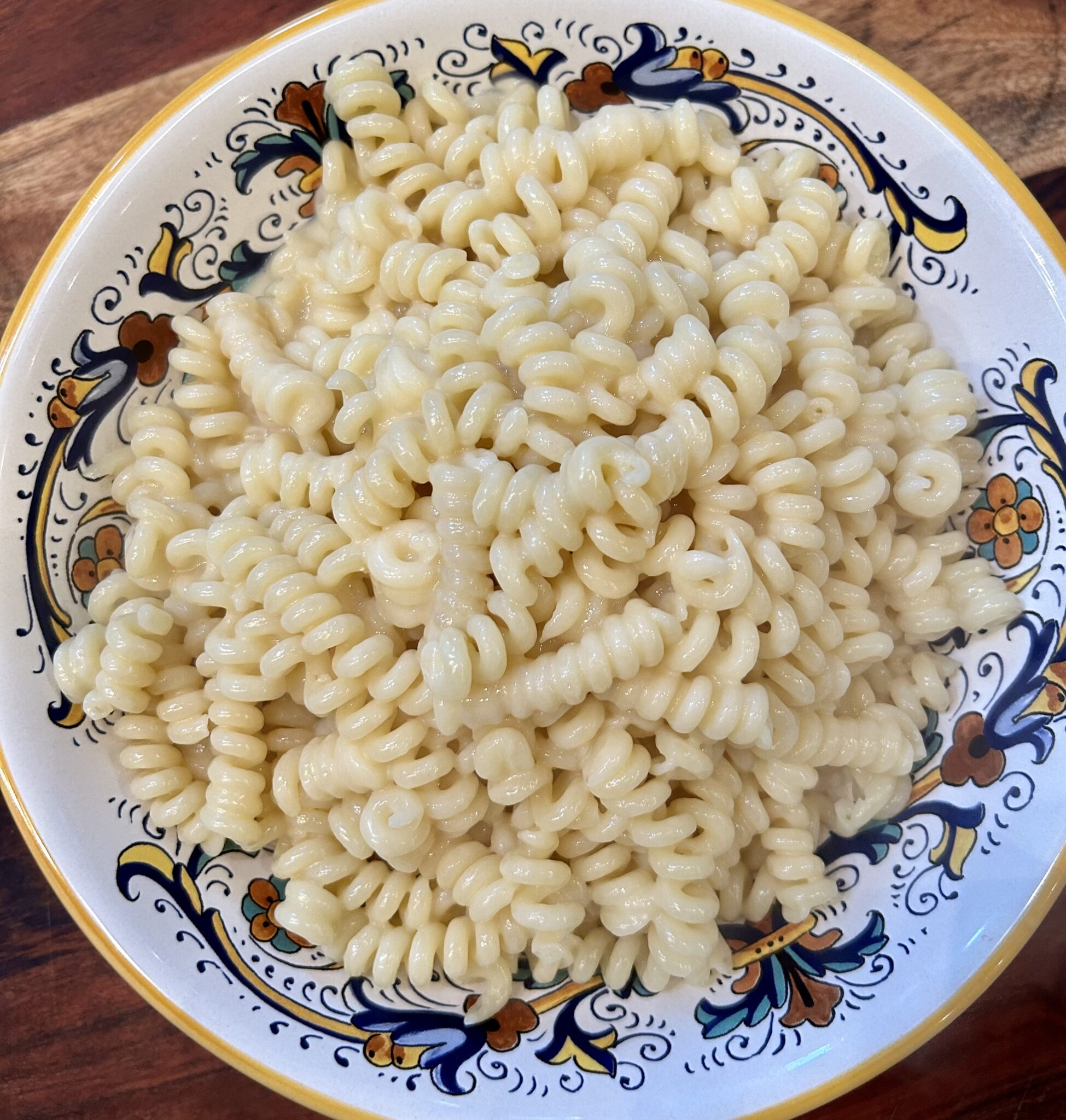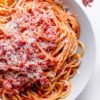PASTA AL BURRO E FORMAGGIO

PASTA AL BURRO E FORMAGGIO
Ingredients
- - 8 oz Fusilli
- - 4 tbsp Butter
- - 3/4 cup Parmigiano Reggiano
- - Salt (to taste)
- - 1 cup Pasta Water
Instructions
-
Bring a medium pot of water (2 to 3 quarts) to a boil over high heat. (I usually use more water, but for this preparation 2 quarts work well because the pasta water will have a higher concentration of starch.
-
Once the water has reached a rapid boil, add salt and then the pasta. Cook according to package directions.
-
When pasta is ready, reserve 1 cup of the starchy pasta water and drain the rest.
-
Return the drained pasta to the empty pot, add half of the reserved pasta water, and stir on LOW heat until it has almost been absorbed. Keeping the heat VERY low, add the butter and stir well to obtain a creamy consistency.
-
Remove pot from heat, mix in the cheese, and keep stirring as you add the rest of the pasta water—a little at the time—until a creamy, cheesy sauce has been obtained. The pasta should not be dry!
-
Taste the sauce and add a little salt if needed.
-
Transfer to a platter or portion onto individual plates.
-
Buon appetito and SHARE THE PASTA!!
Recipe Notes
Macaroni and cheese, often lovingly shortened to “mac ‘n’ cheese,” may be the US’s quintessential comfort food, and it’s versatile, too, as both a family favorite and a crowd pleaser. Who doesn’t love a bowl of piping hot pasta with an appealing cheese bite? Though the first boxed mac ‘n’ cheese products made their way to American supermarket shelves almost 90 years ago, the origins of this specialty are unquestionably Italian.
As an Italian chef, I deconstructed this fave and reconstructed it based on my own taste and experience.
Mac ‘n’ cheese: meet your ancestor—Pasta al burro e formaggio!
What’s the best pasta to use? Almost any kind works well. I love mac ‘n’ cheese with tubettini (little tubes), orzo pasta, conchigliette (mini shells), fusilli corti (corkscrew pasta), pennette, etc.
How, you may ask, can you achieve the cheesy, crave-able velvety sauce that is the hallmark of mac ‘n’ cheese?
Have no fear! Pasta science comes to the rescue. When pasta cooks in boiling water, it releases some starch, transforming the pasta water into a precious ingredient for what’s to come. Just before the pasta is fully cooked, scoop out a good cupful of the cooking water. Then drain the pasta, return it to the pot, and add back the reserved water. Over low heat, add the butter and stir until you obtain a creamy, velvety sauce. Turn off heat and stir in the grated Parmigiano Reggiano. Ecco fatto: miracle accomplished! The biggest secret? You only need three simple ingredients to conjure a culinary masterpiece.
Want more details?
Follow this simple recipe!






